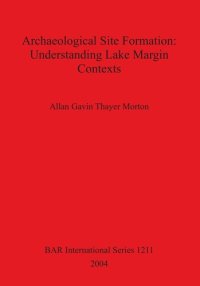
Ebook: Archaeological Site Formation: Understanding Lake Margin Contexts
Author: Allan Gavin Thayer Morton
- Series: BAR British Archaeological Reports International Series 1211
- Year: 2004
- Publisher: BAR Publishing
- Language: English
- pdf
Artefacts are meaningless until viewed in their chronological, spatial and functional context. Archaeological interpretation relies unequivocally on the integrity of these affiliations. The archaeological record, however, is not static. It is part of a dynamic natural system that is constantly being changed and reworked. The importance of this fact is that these natural systems can affect the inferences that archaeologists make. Natural site formation processes must be understood before using the archaeological record for interpretations. There are many natural processes that can affect the record, including biological factors and physical agencies. The potential processes available for study are vast and as a result, within this work a selected set of site formation processes are considered in detail. Of the extensive array of natural processes at work in site formation, a predominant part of the equation is the action of sedimentation. Various past studies in site formation are based on sedimentation in a fluvial environment and have dealt with lake margins only in a cursory manner. It is this geomorphological process in a near shore environment that will be examined for its effect upon archaeological sites and the material artefact record. The archaeological remains examined in this work are possibly Plio-Pleistocene occurrences from East and Central Africa. Chapter One sets out to describe the importance of understanding lake margin processes as well as to describe the scope of this work. Chapter Two includes a discussion of the methodology and background for this research. It will provide the necessary information for an understanding of some of the pertinent geomorphological processes at work at a lake margin. Chapter Three is a presentation of the methodology and results of each site formation experiment conducted. It includes a description of each experiment, summary and descriptive statistics, a discussion of the findings and a summary of results as indicators of archaeological site transformation. Since a single model analogue used exclusively in taphonomic and site formation analysis may be a simplistic approach to a complex situation, actualistic studies outlining alternative models are examined in Chapter Four. It is a comparative study of the effects of a lacustrine incursion with all other known agencies that have potential for transforming an archaeological site. Chapter Five is an application of the results to Naiyena Engol from Lake Turkana, Kenya and Senga 5A from Zaire, the first being a Plio-Pleistocene archaeological site and the second being an occurrence that has variously been interpreted as Pliocene to Holocene in age. Chapter Six is a conclusion and summary of the findings.